Michelin — Tire Tags with Consistent Quality
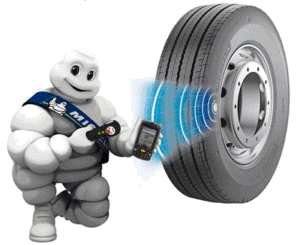
Compagnie Générale des Établissements Michelin is one of the world’s largest tire companies. Michelin manufactures, distributes, and sells tires worldwide. It also offers truck driver assistance services; and fleet tire advice, maintenance, and management services, as well as publishes maps and guides to provide mobility assistance services.
Michelin embeds EPC Class 1 Gen 2 passive ultra-high frequency (UHF) radio frequency identification tags into tire sidewalls during the manufacturing process. This allows, for example, the city’s bus-fleet operators or Michelin’s staff to use RFID to automatically identify each tire at the time that its pressure is being measured and more generally allows a cradle to grave traceability.
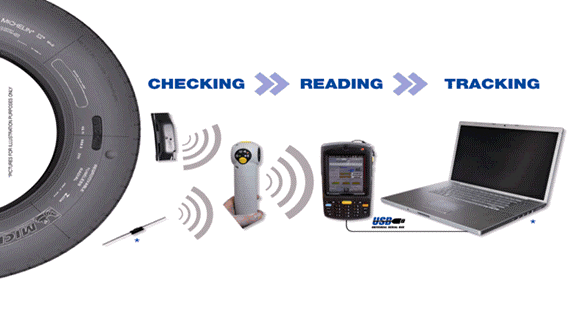
The Michelin RFID tag is specifically designed to be integrated into tires. It is typically buried in the tire during the manufacturing process, but can also be integrated into a patch for aftermarket applications. The tag’s read range has been optimized for in-tire use, and the quality assurance based on performance testing is essential to guarantee that each tag has the same properties. After being embedded in a tire, the tag cannot be replaced anymore, should it function poorly.

The Voyantic Tagsurance UHF production tester was the solution meeting the specification for testing the Michelin tire tags. The tags are first tested by the tag vendor HANA Microdisplay Technologies, Inc at their factory with an automated test system. Michelin has the same Tagsurance testing capability to enable sample-based quality control in the form of incoming inspection at their facilities.
“RFID UHF tags for tire applications are significantly over tuned because of tire material properties, and this makes RF performance – i.e., read distance control – more complex to perform “in the air” compared to more common tags. This challenge can be solved from an industrial standpoint if:
- the system can properly process each tag test without direct contact;
- the test can be done reliably with a large number of other tags in the surroundings;
- the production flow itself is improved and accelerated.
All this has been achieved today, thanks to our partner Voyantic, and this will lead Michelin to supply an improved RFID reading capability over volumes for its customers!”,* explains Julien Destraves, Tire RFID expert from Michelin.
Download a Framework for Applying RFID Tags in Tire Industry ›
Automated Test System for Tire Tag Testing
The Voyantic UHF production testing system consists of the Tagsurance Tester unit and the Snoop Pro coupling element, which enables reliable near field testing for UHF tags. Unlike typical UHF near field antennas, the Snoop Pro coupling element enables characterizing the complete dipole tag structure with excellent correspondence to the far-field behavior.
The Michelin tire factory uses the Voyantic Tagsurance-based Manual Test Station to perform sample-based check and analysis for the incoming tags. At the tag manufacturing plant, the same Voyantic system has been seamlessly integrated by HANA Microdisplay Technologies, Inc. into a precision actuator assembly. It moves a tray of tags on the Snoop Pro antenna, accurately aligning each tag on top of it for testing. With this test system, Hana Microdisplay can 100% guarantee the quality of the tags to their customers.
This is how John Erdmann, the President and CEO of HANA Microdisplay Technologies, Inc. sees the challenges of RFID testing and the role of good equipment in overcoming those challenges:
“Hana Microdisplay produces many types of RFID products and systems. There’s always a challenge in doing accurate and relevant RFID testing quickly and cost-effectively. With the Voyantic system, Hana’s automation engineers were able to integrate a high-level of testing into the process without sacrificing throughput. The data output of the system also allows us to provide more accurate feedback to both our customers and manufacturing lines, to help them design better products and processes. After understanding the capabilities of the Voyantic system during the project with Michelin, Hana Microdisplay chose to implement a Voyantic test system in its most recent roll-to-roll, web-based, high-speed RFID inlay manufacturing line. Hana is also considering retrofitting its older high-speed inlay manufacturing lines to include Voyantic systems.”
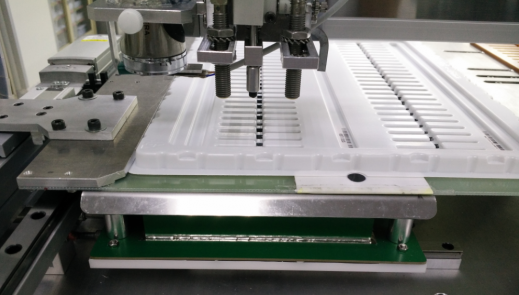
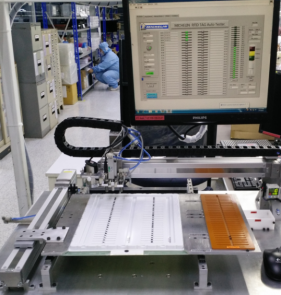
The Challenge of High Resonance Frequency
As the UHF tags manufactured by Hana Micro Display to Michelin are embedded in tires, they will be surrounded by rubber and metal mesh structures, which very heavily detune the tags. To compensate for this detuning, the tag is significantly over-tuned to ~2GHz resonance frequency in the air environment.
To lower the tags’ resonance frequency for testing, some modifications were done on the Snoop Pro coupling element. The shielding plate structure on top of the Snoop Pro is intended to shield out the adjacent tags so that only the tag of interest will be tested at a time. In this solution, the shielding plate was custom designed for the Michelin tags. The plate opening incorporates an additional capacitive loading structure. The structure is cut into two parts from the center to prevent direct shorting resulting in two separate capacitive loading strips. The strips are electrically connected along the opening edges. Optimizing this path length lets the Snoop Pro coupling element mimic the tag loading the tire would generate. The tuning effect was adjusted so that the overall bandwidth of all the Michelin tags designed for different tire types fit into the Tagsurance 800-1100MHz operating frequency range.
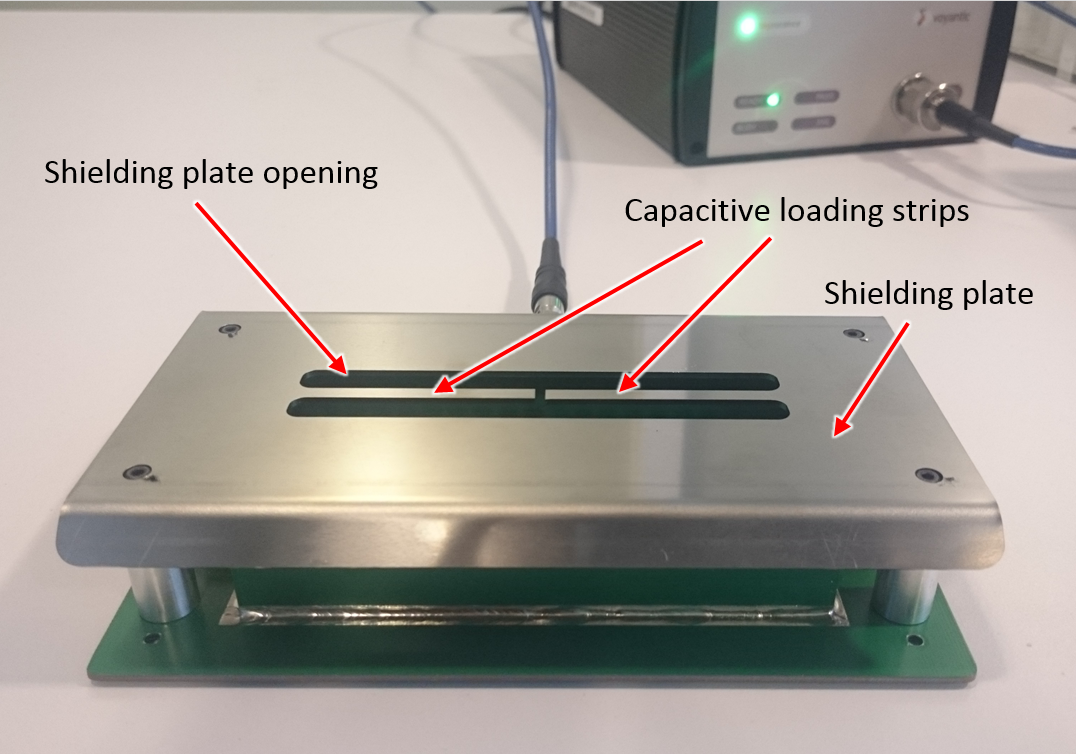
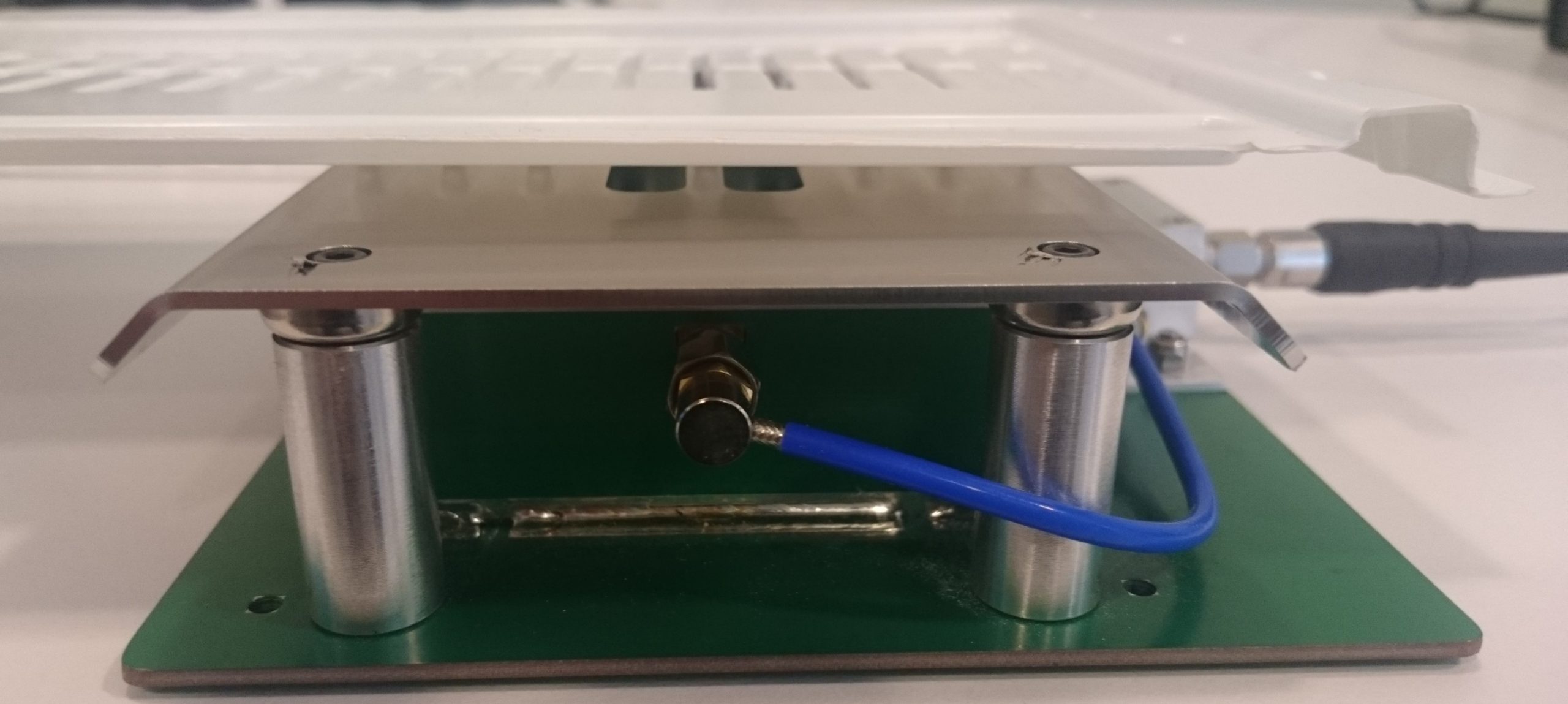
In the below picture, there are some example frequency responses of different tag designs measured on the Snoop Pro coupling element. The actual resonance frequencies of the tags are around 2GHz, but due to the tuning effect of the plate structure, the resonance frequency has been brought down to 920 – 1020MHz.
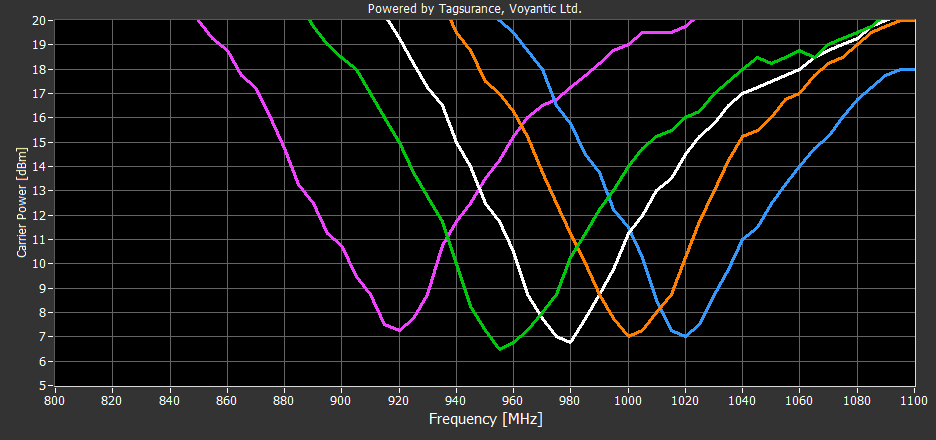
In addition to the metal strips, also a magnetic element adjusting was implemented under the plate to pull the ends of the tag towards the Snoop Pro. The purpose of this is to avoid any variation due to tag placement inside the tray. When using near field coupling in measurements, the tag alignment needs to be accurate to avoid variation due to the test setup.
High-Performance UHF Tags with Stable Quality
The performance testing provided by the Tagsurance UHF production tester allows not only checking that the tags are functional, but that their performance is stable and thus quality is controlled. The testing is done on a frequency range of 800-1100MHz, but for high-speed production testing, the number of frequencies on that range can be limited to guarantee the testing will not become the bottleneck of the process.
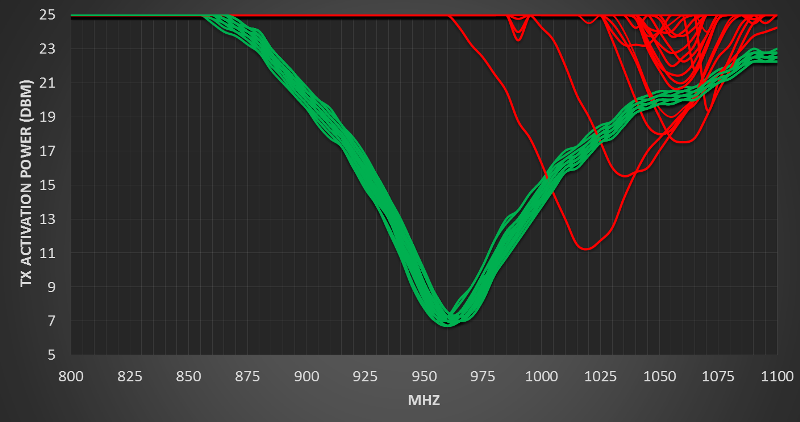
The above graph shows example data of passed (green) and failed (red) tag responses from production. The accurately measured power threshold data is gathered from the production and can be used to analyze the process capability and to track the level of variation from day-to-day. Accurate variance data enables detecting any drifts immediately, executing corrective actions even before the quality falls out of acceptable levels.
RF testing used to be one of the bottlenecks in the tire tag production process; now, with the Tagsurance, this bottleneck is removed, and the slowest processes are the mechanical ones.